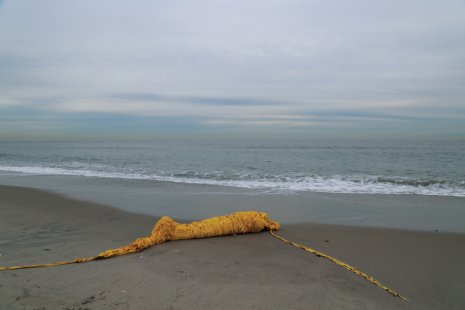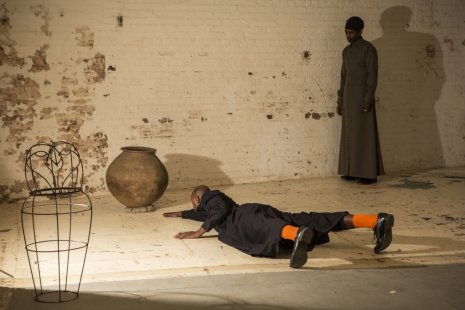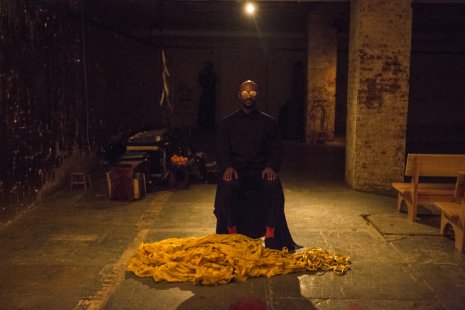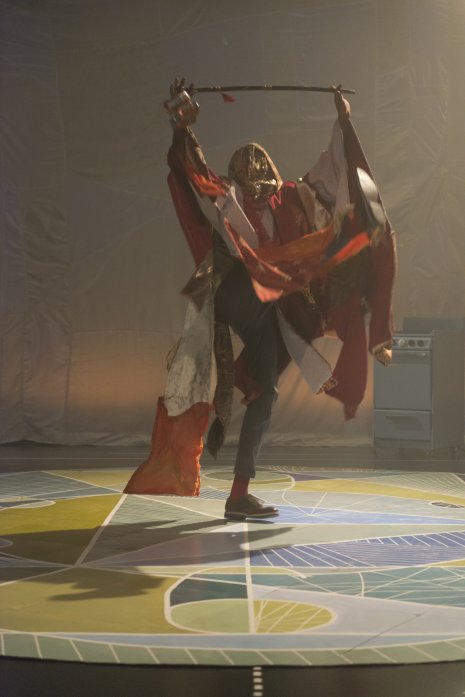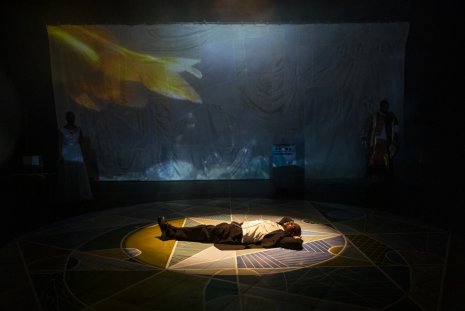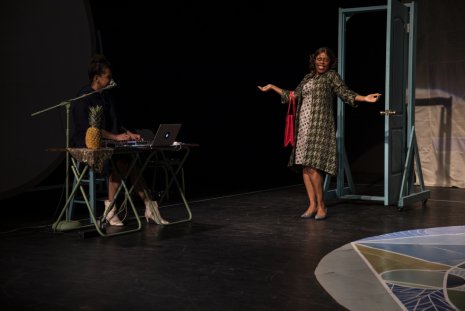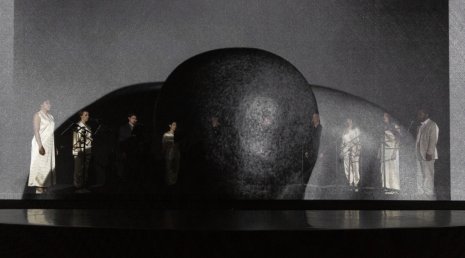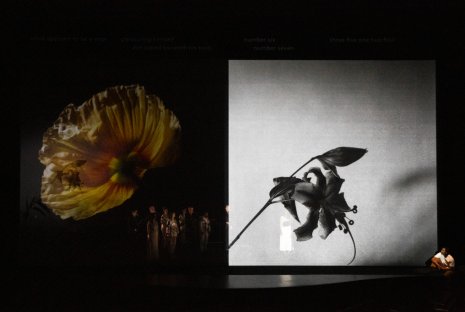In Kaneza's Words...
The center of my work is creating original theater pieces that I direct. I also direct projects initiated by others – dancers, composers, and writers. I begin by curating a team of thinkers and makers with tools to address the expansive lexicons from which I will create the work. The strongest tool of an ensemble is the culture of the group. I collaborate with writers, technicians, sculptors, chefs, actors, printmakers, dancers, stage managers and designers. My teams anchor at intersections of African diaspora and indigenous thought and practice. I believe demographic diversity and formal diversity are inseparable and that great storytelling requires vast vocabularies.
My work is rooted in experimentation. Great innovations in American theater came from margins, diasporic traditions and cultures intersecting. I was drawn to experimental performance for its hybridity and innovation in using media on stage.
There are so many United States. Little Haiti in Miami. Somalia Center in Minnesota. Our Prisons. To make work that addresses the US requires making work in content, process and dissemination that lives in many worlds. By creating art that speaks many formal, cultural, experiential, aesthetic and historical languages, it can speak to many different people. My inclusive practices are fundamental to my pursuit of artistic excellence.
I believe in the dreaming capacity of all audiences. I believe in our hunger to synthesize the abstract, enjoy the hybrid and tend to our internal lives. I have shown work in wildly different contexts from NYC basements, to courtyards in Vietnam, to European opera houses, to US public housing, to rural auditoriums in the UAE. If we make aesthetically, formally and culturally multilingual work it can speak to expansive audiences. By building a theater as hybrid and experimental as the United States we expand the United States’ vision of itself.
The administrators and technicians in my practice are young people of color, mostly black, mostly women. I invest in collective practice and supporting their independent work. By investing in the young artists around my practice, I hope to encourage their individual artistic ambitions and expand the field.
In this pandemic, we are in the bones - of the country, our own psyches, and as an artist, I am in the bones of my practice. The moment is hyper local and hyper global. We are wondering if we know our neighbors’ phone numbers or finding a bodega for weekly groceries. We are also in a crisis of global proportion; many people are newly considering their connection to other parts of the world. Theater has always lived at this intersection – a small immediate community sharing big questions about the world. I love these bones.
An interview with Kaneza Schaal and theater director Liliana Blain Cruz, April 2021.
How wise you were to know those vistas and that heat would be tonic!
The demand of the landscape is so powerful, it flushed out my brain – some tender whisper of ‘this not about you, you’re on my time now’. I needed that.
So much. I’ve been thinking about how we make things, you know. You and I have talked about this, about what we take with us from this time, the already broken & untenable ways of working that must go.
The thing that is truer of what we do, than any other art form, is that we cannot do it alone. Our work is inherently collective. I’ve been thinking lots about the structures needed to protect and reinforce that collectivity. Ways to formalize this without endangering the economies of practice, generosity, care, hard-ass-work, that I seek to protect. So often when people try to institutionalize or grow these informal economies we work in -- the many us-es we are trying to serve in the first place get short thrifted.
I’ve been thinking lots about home. The function of home within art practice. Within collectivity. This seems essential to the ferocious act of invitation required to engage artists, audiences, administrators, technicians who have been historically uninvited to the theater.
You saw GO FORTH?! I didn’t know that. That makes me smile. Journey – I like that language. I talk a lot about “frames” usually – how to create the work but also how to create its “frame” – the ways it will live and be experienced in the world.
So much of my own journey in the theater has been about creating contexts where I can bring more of my many selves to bear. I want that for audiences, for collaborators, for myself, contexts where many histories, experiences, cultures, questions can be engaged – a performance that can hold many journeys.
You know that play you did at NYTW with the pool? I felt this way about Marys Seacole too! But you have this powerful, graceful hand as a director. It feels like you choose when you let us see your hands and when you make them disappear altogether, through wizardry. Well – the way that makes me feel, the light touch of that – THAT’S what I want more of. In my experience. In my own experience of how the work gets made. I want to feel as at ease, playful, light of touch, in my making as I feel when I see your work!
I also know that feeling in your work comes from tremendous labor. So I want that for you too! Ha! I want it to be the way it feels to watch.
********************



